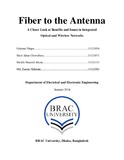| dc.contributor.advisor | Ali, Dr. Mohammed Zamshed | |
| dc.contributor.author | Haque, Fahimul | |
| dc.contributor.author | Chowdhury, Sheri Jahan | |
| dc.contributor.author | Ahsan, Sheikh Shazeed | |
| dc.contributor.author | Rahman, Md. Zamiur | |
| dc.date.accessioned | 2014-09-10T09:42:06Z | |
| dc.date.available | 2014-09-10T09:42:06Z | |
| dc.date.copyright | 2014 | |
| dc.date.issued | 2014-08-28 | |
| dc.identifier.other | ID 11121036 | |
| dc.identifier.other | ID 11121071 | |
| dc.identifier.other | ID 11121111 | |
| dc.identifier.other | ID 11121083 | |
| dc.identifier.uri | http://hdl.handle.net/10361/3593 | |
| dc.description | This thesis report submitted in partial fulfillment of the requirement for the degree of Bachelor of Science in Electrical and Electronic Engineering, 2014. | en_US |
| dc.description | Cataloged from PDF version of thesis report. | |
| dc.description | Includes bibliographical references (pages 93-98). | |
| dc.description.abstract | With the fast-growing technology in the communication industry, demand for speed and
mobility of the data exchange throughout the world is accelerating in an incredible rate. To meet
such demand a need for the integration for the wireless network enhancing mobility and fiber
network enhancing speed has become a necessity.
Hence, in our thesis work we have done an extensive research evaluating all the drawbacks and
advantages of each of the two networks separately and also went through the latest developments
of their integration. After studying we have found Fiber to the Antenna Solution (FTTA), which
has proved to be a very promising solution to our problems.
Fiber to the Antenna (FTTA) solution in integrated optical and wireless networks brings
significant benefits offering speed and mobility in communications. However, there are some
unavoidable issues that field engineers constantly experience while implementing physical
components of FTTA systems at cell sites. In this thesis paper, we study FTTA architecture,
physical components, benefits and implementation issues very closely. The benefits of FTTA
using Radio over Fiber technology are highlighted. Also, the implementation issues with power,
environmental protection, surge protection etc. are analyzed thoroughly with currently available
solutions in the market. | en_US |
| dc.description.statementofresponsibility | Fahimul Haque,
Sheri Jahan Chowdhury,
Sheikh Shazeed Ahsan,
Md. Zamiur Rahman, | |
| dc.format.extent | 107 pages | |
| dc.language.iso | en | en_US |
| dc.publisher | BRAC University | en_US |
| dc.rights | BRAC University Internship reports are protected by copyright.
They may be viewed from this source for any purpose,
but reproduction or distribution in any format is prohibited
without written permission. | |
| dc.subject | Electrical and electronic engineering | en_US |
| dc.subject | Wireless networks | en_US |
| dc.subject | Fiber to the antenna | en_US |
| dc.title | Fiber to the Antenna : a closer look at benefits and issues in integrated optical and wireless networks | en_US |
| dc.type | Thesis | en_US |
| dc.contributor.department | Department of Electrical and Electronic Engineering, BRAC University | |
| dc.description.degree | B. Electrical and Electronic Engineering | |

